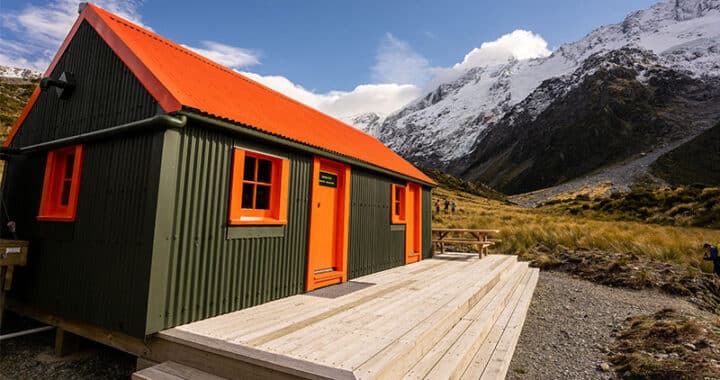New fishing catch limits introduced to protect Chinook salmon
3 min read
North Canterbury Fish and Game CEO Rasmus Gabrielsson, with a sea-run Chinook salmon at Manuka Point, in the upper Rakaia River. Photo: Richard Cosgrove Fish and Game NZ
A season bag for sea-run salmon will be introduced in the 2021/22 fishing season to help save New Zealand’s wild Chinook salmon species. The change to freshwater fishing regulations will replace the daily catch limit.
“The wild sea-run salmon fishery has been in decline for over 20 years. Traditional regulatory options haven’t been working for Fish & Game so new techniques were required,” said Alan Strong, chair of North Canterbury Fish and Game Council.
The sea-run salmon fisheries of Canterbury and North Otago account for 90% of all sea-run salmon caught in the South Island but spawning runs now see less than 10% of the numbers seen in the 1990s.
“The decline in spawning runs might be caused by a host of factors, including habitat and water quality, hydropower development and irrigation practices, and ocean temperatures. Most of these factors are outside Fish and Game’s control. So we have to make the best use we can of our bag limit power and the data we’ve accumulated over many years,” said Dr Andrew Simpson, chair of Central South Island Fish and Game Council.
Overseas research shows the advantages of limiting season bags, and in 2020, both Canterbury-based Fish and Game Councils consulted with anglers and jointly sought Government’s approval to implement a season bag limit.
Read more: New proposal sees season bag limit on sea-run salmon in South Island
Read more: First east coast-wide salmon harvest survey to start
“It is critical that there are sufficient sea-run salmon spawning to sustain future generations,” said Fish and Game officer Mark Webb, who led the staff team developing the new approach.
“The size of the season bag limit will be reviewed annually, based on where the size of the spawning population sits within the range of spawning thresholds.”
Anglers will be able to get their salmon bag limit card online through the Fish and Game licencing system, similar to how anglers currently obtain a free backcountry endorsement.
When an angler reaches their season bag limit, they will have to stop fishing for salmon for the remainder of the season.
While a season bag limit is new to New Zealand anglers, it is widely used to manage fisheries around the world, said Fish and Game. Modelling shows that it may be the single most effective regulation to ensure enough sea-run salmon reach the spawning grounds.
Fish and Game’s 2017 Salmon Symposium highlighted the need for more nuanced management mechanisms that reduced the overall harvest of salmon while maintaining equitable access to the fishery for all anglers.
Angler catch surveys indicate that after spending up to three years at sea, between 40 and 60% of salmon returning to spawn in Canterbury rivers are caught by anglers. It is estimated that a season limit bag of two fish will reduce total catch by about 35%, directly increasing the number of fish that can spawn and sustain future generations of salmon. The season bag is expected to affect only a fraction (about five percent) of salmon anglers.
“A season bag limit is, therefore, the single most effective tool available to protect the sea-run salmon fishery by ensuring enough salmon reach the spawning grounds to sustain our iconic East Coast salmon fisheries,” Simpson and Strong noted.
In the future, Fish and Game expects that a season bag limit regime will allow them to relax current restrictions on when and where anglers fish, to increase angling opportunities when wild salmon numbers rebound.



